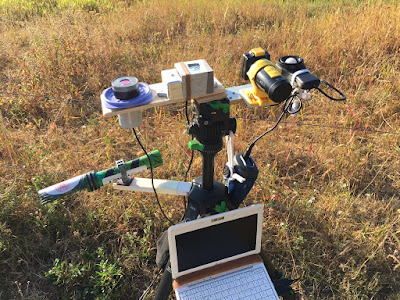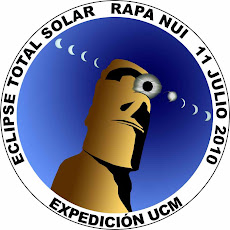También se registró la variación de la temperatura ambiente. Las medidas de TESS-W (puntos azules) muestran la inercia debida a la carcasa del fotómetro ya que el sensor de temperatura se encuentra en su interior. Los puntos negros corresponden a una sonda externa que muestra valores más realistas. Se encuentra como se esperaba un retraso de las temperaturas frente a la luminosidad del cielo.
 En la imagen se muestra el dispositivo experimental con el sensor de temperatura (a la izquierda, tubo verde alargado), fotómetro TESS-B, fotómetro TESS-W (con filtro solar), cámara de ambiente y luxómetro.
En la imagen se muestra el dispositivo experimental con el sensor de temperatura (a la izquierda, tubo verde alargado), fotómetro TESS-B, fotómetro TESS-W (con filtro solar), cámara de ambiente y luxómetro. From left to right: temperature sensor (green cilinder), TESS-B photometer, TESS-W photometer with a solar filter on, ambient camera and luxmeter.
Sky brightness data at zenith during the eclipse were obtained with the help of two TESS photometers from STARS4ALL EU project. A solar filter over one of the photometers was needed to record the brightness during parciality since the TESS photometers have been designed for night sky brightness. The data from the filtered and unfiltered photometers have been plotted as Rred and green points respectively. The temperature variation was recorded with the sensor inside TESS-W (blue line) and also with an external thermo couple (black points). These values do not show the inercia due to the enclosure but the delay between brightness and temperature is real.
Temperature sensor provided by http://www.intermet.es/






No hay comentarios:
Publicar un comentario